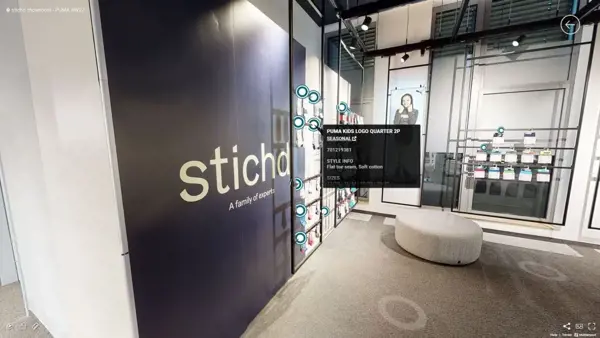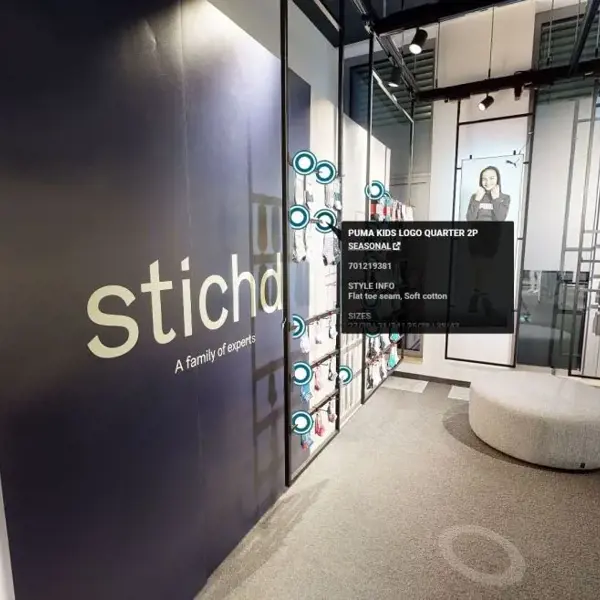STICHD seizes opportunities with data & integration
Data is the engine of every modern company. But without the right fuel, you won’t get far. By integrating its numerous data streams, STICHD – a partner of fanwear and fashion brands worldwide – has improved the quality of its data and laid a solid foundation for data-driven operations. How does this data-driven approach help them differentiate themselves?

Maarten van Looij, Solutions Architect at STICHD, and Daan Damhuis, Manager of Data & Analytics at STICHD, discuss the challenges of data integration, collaborating with HSO, and how a robust data platform helps them seize opportunities.
Manchester City: Quick action under pressure
When one of the world’s biggest football clubs, Manchester City, came knocking, STICHD faced a significant challenge. “They wanted real-time insight into sales data from various sources. Such a request requires seamlessly connecting different data sources, such as sales figures from webshops and physical stores with POS systems,” Daan explains.
And this had to happen quickly, as the deadline was tight. Besides the technical challenges, this required flexibility across the organization. No lengthy decision-making processes but immediate action whenever an opportunity arises. “When we see an opportunity, we want to take it,” Maarten says, describing the company culture.
When we see an opportunity, we can quickly turn to HSO for extra capacity or expertise that we don't have ourselves. That makes the collaboration very dynamic.
Integration in Azure
Data came from many sources: webshops, logistics processes, ERP, and WMS. How do you make this data accessible, manageable, and valuable? Direct integration between systems was a bottleneck; valuable information was locked in various systems, and linking them took a lot of time. To maximize opportunities, Microsoft’s Azure data integration platform was implemented – in collaboration with HSO.
A longstanding partnership
This collaboration goes way back. What began with implementing the Modern Workplace evolved into a strategic partnership, now focusing on data integration. STICHD has an informal atmosphere with short lines of communication and plenty of room for initiative. “There’s always something happening. We rarely sit still,” Maarten says with a laugh.
This approach requires a partner who can move flexibly. “When we see an opportunity, we can quickly engage HSO for additional capacity or expertise we don’t have ourselves. This makes the collaboration very dynamic,” Maarten adds.
HSO supports not only on a technical level but also shares knowledge and insights. “We initially chose a closer collaboration with HSO because we didn’t yet have much cloud knowledge. They guided us and didn’t only consider: does it work? But also what the best solution is. Additionally, we conduct inspiration sessions on current developments, such as Microsoft Fabric,” Daan says.

Acceleration in implementations
The successful implementation for Manchester City turned out to be a catalyst for future projects. “Before, we would spend three months setting up the initial framework,” Maarten says. “For Trackside (fanshops at Formula 1 circuits), it was done in six to seven days, and the new POS system at Manchester City was set up in three days.” This acceleration is thanks to the forward-looking architecture. “If you set it up right from the start, you can reap the benefits when handling similar cases,” Maarten explains.
We can now see in real time which products sell best during a race and when stock is running low, or when too much of a product has been purchased.

Inventory management and new channels
For STICHD’s clients, having the right products in the right place is crucial. Thanks to Azure integration, inventory management for stores at Formula 1 race circuits significantly improved. “The coordinator checks the dashboard or phone and sees: this item is surplus in one store but in shortage at another. Then we can transfer stock from Store A to Store B if necessary,” Daan explains.
“We can now see in real-time which products sell best during a race and when inventory is running low—or, conversely, when too much of a product has been purchased,” Daan adds. This allows for quick responses to changes in demand, ensuring store inventories at the circuits are always optimized.
Because data like inventory management, trend data, and pricing is easily accessible, there’s room to quickly respond to market developments. “We had a lot of data but couldn’t access it quickly. Managing and setting up new sales channels wasn’t straightforward. Now, we can implement new sales channels without major impacts on our existing processes,” Maarten adds.
The foundation is set
The integration of data streams with the Azure data platform has created a flexible, future-proof foundation. And that future is ambitious. AI is on the agenda, but STICHD opts for a thoughtful approach. “We’ve mostly worked on the foundation and not so much on application. I think we’re now in a better position to move toward that,” Maarten reflects.
And the collaboration with HSO? That remains important. Not only technically but also in terms of shared knowledge. “When the time comes, we’ll have HSO as a sparring partner to explore new innovations together,” Maarten concludes.

About STICHD
As part of the PUMA Group, STICHD has evolved over the years into an international specialist for brands such as Tommy Hilfiger, Manchester City, Formula 1, and LEVI’S. For specialized products like legwear, swimwear, and fanwear, STICHD fully supports its partners in product design, marketing, sales, order processing, and distribution.





